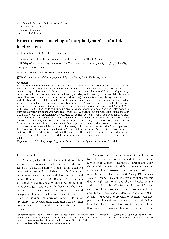摘要
The morphodynamic evolution of an idealized inlet system is investigated using a 2-D depth-averaged process-based model, incorporating the hydrodynamic equations, Englund-Hansen's sediment transport formula and the mass conservation equation. The model has a fixed geometry, impermeable boundaries and uniform sediment grain size, and driven by shore-parallel tidal elevations. The results show that the model reproduces major elements of the inlet system, i.e., flood and ebb tidal deltas, inlet channel. Equilibrium is reached after several years when the residual transport gradually decreases and eventually diminishes. At equilibrium, the flow field characteristics and morphological patterns agree with the schematized models proposed by O'Brien (1969) and Hayes (1980). The modeled minimum cross-sectional entrance area of the tidal inlet system is comparable with that calculated with the statistical P-A relationship for tidal inlets along the East China Sea coast. The morphological evolution of the inlet system is controlled by a negative feedback between hydrodynamics, sediment transport and bathymetric changes. The evolution rates decrease exponentially with time, i.e., the system develops rapidly at an early stage while it slows down at later stages. Temporal changes in hydrodynamics occur in the system; for example, the flood velocity decreases while its duration increases, which weakens the flood domination patterns. The formation of the multi-channel system in the tidal basin can be divided into two stages; at the first stage the flood delta is formed and the water depth is reduced, and at the second stage the flood is dissected by a number of tidal channels in which the water depth increases in response to tidal scour.
- 出版日期2010-11
- 单位南京大学; 浙江省水利河口研究院
